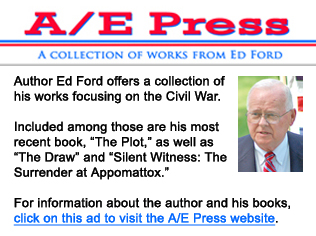|
The Battle Flag – a symbol of hate
or one depicting Southern pride?
The Confederate Battle Flag has become a highly divisive symbol in the United States.
Last year, in a national survey across all races, the Battle Flag was viewed by 57 percent of Americans as a symbol of Southern pride. But the remaining 43 percent were of the opinion that the flag represented racism.
Actually, the banner commonly referred to as the Confederate Flag never was recognized as a symbol of the Southern states. In truth, it was the Army of Northern Virginia battle flag and never was recognized as one of the Confederacy’s national banners. The battle flag, however, is the most recognized Confederate flag and has become the single most identifiable symbol of the Confederacy. It often is flown by the Ku Klux Klan and other white supremacists, which has made it a controversial and divisive symbol that represents racial oppression to some and Southern heritage to others.
At the start of the Civil War, the Bonnie Blue Flag – a blue banner with a single white star – was an unofficial flag of the Confederate States. The first official Confederate National Flag was based on the U.S. flag and had a large red bar at the top and one at the bottom, with a broad white bar between. In an upper corner, a blue box contained seven stars, for the seven states that constituted the whole of the Confederacy at the time it was designed.
Eventually, it would have 11 stars, including one each for Kentucky and Missouri, although neither state ever seceded from the Union. Its appearance gave it the nickname “Stars and Bars,” and was first used officially at the inauguration of Jefferson Davis on March 4, 1861.
At the First Battle of Manassas (First Battle of Bull Run), Confederate commanders discovered the Stars and Bars bore too similar a resemblance to the U.S. Stars and Stripes. This nearly led the Southern commander, Brig. Gen. P.G.T. Beauregard, to order a retreat because he mistakenly thought arriving Confederate reinforcements were Union troops. With these reinforcements, however, Beauregard won the battle from which he almost had withdrawn.
In the spring of 1863, the Confederate Congress, after much debate, approved a new design. This rectangular flag would be totally white except for a replica of the square battle flag in the upper left corner, descending about three-quarters of the way to the bottom. Called the “Stainless Banner,” it also caused problems. When not fully unfurled, the large area of white gave it the appearance of a flag of truce. This version of the flag draped the casket of Confederate Lt. Gen. Thomas “Stonewall” Jackson, so it also sometimes is called the “Jackson Flag.”
The third and final national flag of the Confederacy was adopted on March 4, 1865, just weeks before the war ended. To eliminate the possibility of the flag being mistaken for a flag of truce or surrender, a broad, vertical red bar was added to the front edge of the second national flag. Because it was adopted when the war nearly was over, this flag saw little use, but it flew over some buildings and Southern ships before the official adoption date.
The Confederate Battle Flag of the Army of Northern Virginia was used more commonly in the Eastern Theater than in the Western, where the first Confederate national flag was used throughout the war. Variations of the Battle Flag were incorporated into some regimental flags, both East and West, as well. It is doubtful that the Battle Flag ever was flown in Kentucky.
The Battle Flag re-emerged as a flashpoint in America’s race relations following the murder of nine blacks by a white gunman in June 2015 at a church in Charleston, S.C. The gunman was seen later posing in photos with the flag.
The episode stirred a movement to eliminate the Confederate Battle Flag from South Carolina’s statehouse and many other Southern public displays during the months that followed.
But, the banner still is seen by many whites as a sign of Southern heritage, not hate.
|



